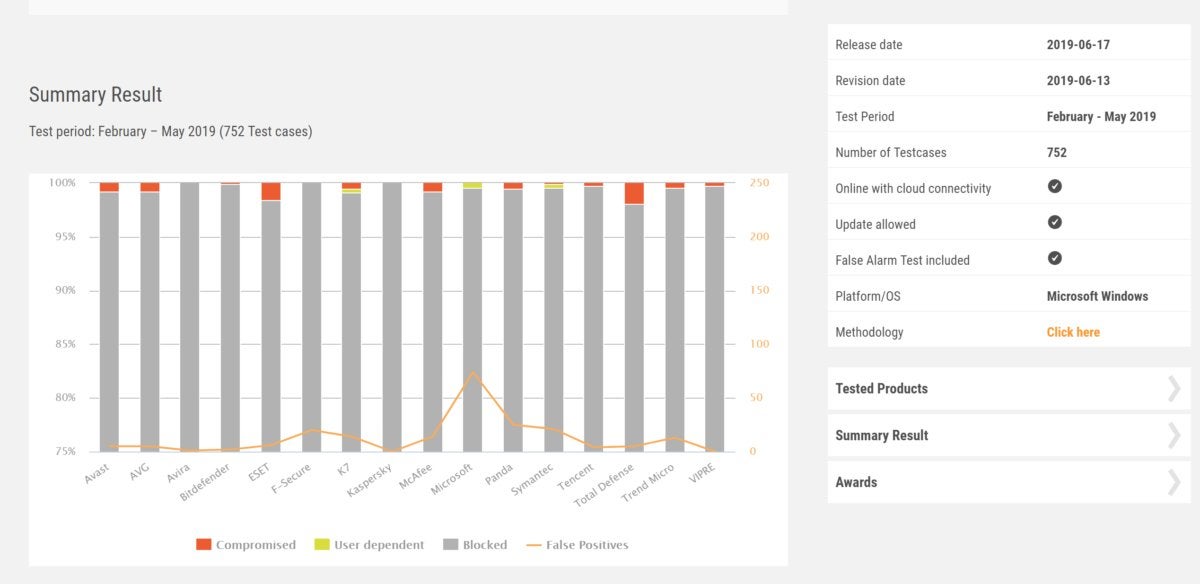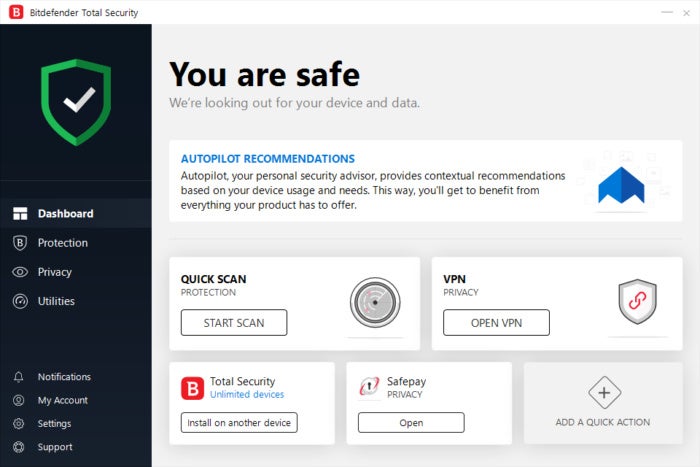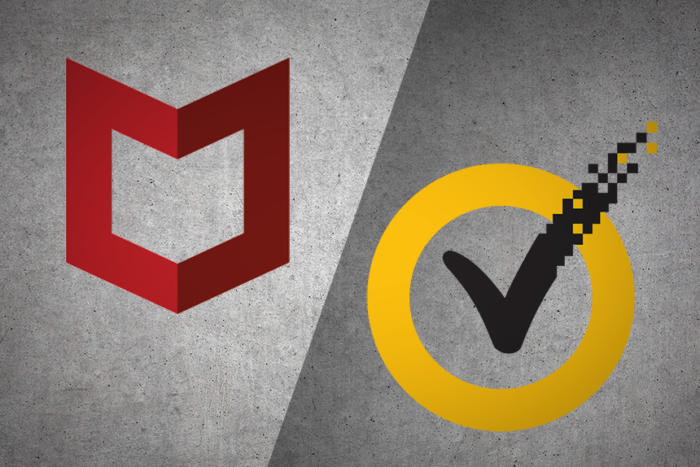You don't need to pay for antivirus software anymore. Microsoft’s Windows Defender, a free service that’s built right into Windows 10, is now as good as the paid antivirus/antimalware solutions that have been collecting your money for years. There, we said it.
Many PC users became accustomed to paying for antivirus software for two reasons: Good, free alternatives were scarce, and Microsoft offered minimal protection via Windows, ceding the category to Norton, Kaspersky and a host of other third-party vendors. Windows’ first antimalware efforts were so abysmal that testing agencies like AV-comparatives.org and AV-test.org used Defender as the baseline (i.e., junk) level of performance. In December, 2013, for example, AV-test.org tested how well 23 antivirus vendors blocked real-world malware samples using Windows 8.1. Microsoft finished dead last.
That was then. Over the intervening years, Microsoft started taking endpoint security seriously. In 2019, Microsoft’s own Windows Defender Antivirus, built right into Windows 10 for free, often outperforms paid services. (Windows now lumps Windows Defender Antivirus underneath what it calls Windows Security, which includes Windows Firewall and other tools.) It’s not perfect: The incidence of “false positives,” where legitimate apps are mistaken for malware, can be high. One test also noted that it slowed down a low-end PC more than others do. You can decide for yourself: Are these “costs” more affordable than paying $60-plus per year?
We still review the best antivirus apps, and there are still some reasons why you'd want one, which we'll get into later. But first let's look at how far Windows Defender has come, and how well it could stand on its own as your primary antivirus package.
Why you should use Windows Defender to protect your PC
Two separate testing houses, AV-comparatives and AV-test, rank Windows Defender nearly at the top of the products both labs have tested.
It’s important to note that antimalware testing is a time-intensive process. Even sites like AV-comparatives use automated tests that crawl the web and seek out malicious sites and URLs, trying to reproduce real-world scenarios that all of us would encounter in our daily work.
One key point stood out: In AV-comparatives’ test, Microsoft was one of the four vendors (out of a total of sixteen) that didn’t allow any malware to take over its test systems. Vendors whose PCs ended up compromised with malware included big names, such as McAfee and Symantec. (Malware and protection mechanisms are constantly evolving. AV-comparatives ran its tests from February through May, 2019, to demonstrate the “average” level of protection over time.)
Here’s a snapshot of AV-comparatives’ findings:
 AV-Comparatives.org
AV-Comparatives.org To be fair, the AV-comparatives test showed a few weaknesses with Windows Defender. The tests revealed three “user-dependent” test cases, where Defender didn’t immediately identify the malware, and asked the user for permission to install the file. That’s not ideal—users would probably be inclined to allow the malware onto the system. Windows Defender was also unusually heavy-handed with false positives, blocking a massive 74 legitimate apps and services. (This is an instance where your own experience can serve as a sounding board. Think back: Has Windows 10’s Windows Defender blocked an app you knew to be legitimate?)
For its part, AV-test ranked Windows Defender as a Top Product in its June 2019 antivirus group test. Defender caught every piece of malware the agency threw at it, including every “zero-day” sample that reproduced real-world testing, with zero false positives. AV-test ranked Defender 6 out of 6 for the group test, scores that Defender has been at or near for AV-test’s April roundup, the February roundup, and December 2018 and October 2018 tests, too.
Here’s a snapshot of the AV-test June 2019 roundup:
 AV-test.org
AV-test.org It’s important to reiterate that Defender scored highly (with a perfect score in the June update) in terms of zero-day attacks. Historically, that was one of the knocks against Defender: Microsoft couldn’t react quickly and effectively enough to combat new, emerging attacks. Defender’s repeated success in third-party tests proves that Microsoft has overcome these obstacles.
AV-test also ranked Defender above the industry average in terms of performance, such as installing apps and copying files, a significant improvement over AV-comparatives’ own test from April, where Defender performed poorly in those same comparisons.
The UK’s SELabs is yet a third source of antimalware testing, and it, too, ranked Defender at the top of its list of antimalware solutions. The report (available only via a downloadable PDF) gave Defender a perfect 100-percent accuracy rating. Of the top antivirus testing agencies, Defender scored three out of three.
Multiple test results make the case that Windows Defender is good enough to protect your PC from viruses and malware. Of course, you should always practice safe Internet practices, such as not clicking on unknown links and attachments, and not wandering through the dark corners of the web. And don’t forget, Windows Sandbox (added to Windows 10 Pro machines as part of the May 2019 Update) allows you that extra protection in case you do want to explore a risky site or app.
Great free antivirus options can be added to Defender
OK, maybe you're still not convinced. If you want an extra layer of antimalware protection, Defender makes that easier, too.
Historically, running two antivirus programs was considered a bad idea, because of potential conflicts. Windows 10 allows you to run whatever antimalware program you choose, and optionally leave Defender in place to periodically check for threats as a secondary measure. (Go to Settings > Update & Security > Windows Security, then click on Virus and threat protection. Scroll down to Windows Defender Antivirus options and make sure periodic scanning is toggled on.)
 IDG
IDG
There’s a number of free antivirus solutions from which to choose, though BitDefender is a preferred choice. (Note that this screen has been taken from the paid security suite.)
Here you have a wealth of free antivirus options, from AVG to Avast to Avira and many more. BitDefender Internet Security’s free option, however, is so effective and unobtrusive that you’ll forget that it’s there—which, really, is what you want in an antivirus program that guards your PC. It, too, is rated as a top product by AV-test and AV-comparatives, though both tested the paid versions. (To our knowledge, there is no difference between the paid and free versions in terms of anti-malware protection.)
Again, we’d rate Windows Defender as sufficient protection for everyday use, with Windows’ ability to layer on additional antimalware capabilities as a security blanket.
Who should buy a paid antivirus product
 Rob Schultz / IDG
Rob Schultz / IDG
Established antivirus/antimalware products from McAfee, Symantec, and others have branched out to offer VPNs, password vaults, and other security services.
The reason why you might still want a paid antivirus and antimalware solution is if you want more services, tied up in a neat package. The leaders have moved beyond traditional protections, offering related services such as VPNs, credit monitoring and protection, and online vaults for your passwords and other critical documents. Rob Schultz / IDG
While some attackers simply want to crash your system, remember that there’s far more money to be made in attacks like ransomware, which encrypt your PC and then demand that you pay for the decryption key. Both Malwarebytes and BitDefender, among others, have developed free anti-ransomware solutions, which again provide a free alternative.
Windows has its own free protections that help stop ransomware, including Windows Defender as well as protected folders that can be locked down and secured. Nothing’s perfect, and no one can say for sure that a new attack won’t be able to break Windows’ protections. But that argument applies to paid services as well.
Alternatively, you can roll your own a-la-carte security suite, building on top of Windows’ own antimalware service> Seek out your preferred VPN provider from our list of best VPNs, for example. Subscribe to LifeLock or a credit-monitoring service. Google Chrome and other browsers will manage your passwords, or you can pick from a list of the best password managers.What paid antimalware suites offer are vetted services, all rolled up into a neat, manageable package, as well as peace of mind.
That convenience comes with a price, however, one that will hit your wallet every year as part of a recurring subscription. If you want to keep paying for these kinds of services, that’s fine. But if you’re looking for a way to save money, cutting out your existing paid antivirus subscription in favor of Windows Defender is worth a good, hard look.